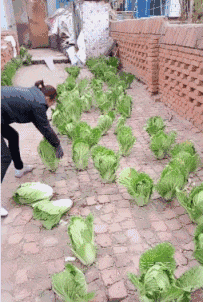The prelude to the water insertion of rose is very simple, and the follow-up is the problem.

Did you learn the method of water insertion in the last summer rose? In fact, in the whole process of water insertion, the "prelude" is very simple, and the problem mainly lies in the problem of transplanting after rooting and how to maintain it after transplanting.
The reason why it is troublesome to transplant water cuttings after rooting is that it is just removed from the water, so many leaves will certainly evaporate a lot, but there are not many roots, so it is impossible to supply the whole plant to consume, and there is no way to supply water. At the same time, the nutrition supply is not online, so transplanting to the soil is difficult to survive.
The root system of rose planted with water is exposed, which can absorb air, and once it is in the soil, it will reduce the ability to absorb air and affect growth. at this time, we can first choose loose and breathable plant materials, such as humus soil, plain sand, etc., to maintain air permeability and drainage.
People often ask whether sawn wood can be used for transplanting, but it is best not to talk about it here today, because sawing wood is easy to harden after being soaked with water for a long time, first of all, the permeability is not good, and secondly, the nature of sawn wood itself is not very suitable for rose. So we'd better consider other substrates.
With regard to the root length when transplanting, there is no specific requirement, according to their own situation and preferences, most of them are transplanted around 1cm, but I am generally used to transplanting around 3cm, and I always feel that the root grows with a high survival rate. Of course, there are also flower friends who transplant when 1mm, no problem, but there is nothing I can do about this boldness.
Transplant the flowerpot directly with a small one on it, not too big, the method once and for all is not much good, or their own hard work a little bit, slowly with the growth of the pot to be more reliable.
When planting, we should pay attention to the fact that what we are planting at this time is a small seedling that has already taken root, not a bare branch, so we must be careful, the new seedling is very fragile, it is accidentally broken, and it is so small and small that it can not stand the trouble at all.
When transplanting, it is best to choose the filling method, that is, hold the rose to be transplanted in one hand to hang in the air of the basin, maintain a good position, fill the soil with the other hand, fill the soil with soft rather than large blocks, and gently shake the flowerpot after the soil is finished, so that the soil and root contact more completely, you can also gently press the basin surface to make the soil fit.
As the water cutting rose has been growing in the water, so the dependence on water is very high, transplanting to the soil, must not adapt to the environment, in order to improve the survival rate, we can remove some leaves, put in the shade, slowly slow the seedlings, do not rush to see the light. After slowing down the seedlings for 7 days, the special organic liquid fertilizer of rose can be diluted 500 times, and the seedlings can be watered with roots once a week, which can promote the growth of seedlings and increase their strong growth.
In addition, you can spray more water around the flowerpot for moisturizing treatment, if you are afraid that the water evaporates too fast, your pace of life can not keep up with watering, you can also cover the basin with thin film to moisturize.
The method of rose water cutting is easy to use, but don't lose your life carelessly when transplanting. As long as you conserve water and let the rose slowly adapt to the soil environment, you will be able to survive this period of hard time!
- Prev

Take care of my husband for 2 years. He left the house to my mother and asked me to give it to my brother. I replied with a smile.
(from readers, pictures of this article are from the Internet) take care of my husband for 2 years, he left the house to me, my mother asked me to give it to my brother, I smiled back three words before I thought, for the sake of my family, I can give everything, only to find out later, I.
- Next

The aunt's new skills of growing cabbage in the cracks in the brick can grow four or five jin.
It seems that Chinese people are born with the divine skill of growing vegetables. Not only can they be planted in the United States, Africa and space, but even a place with such a narrow gap in bricks is not wasted. They have been planted with cabbage, eggplant and spring onions by their aunts. Grow cabbages in the cracks in the bricks.
Related
- Wuhan Hospital Iron Tree Blooming Result Was Instantly Frightened by the Gardener Master
- Which variety of camellia is the most fragrant and best? Which one do you like best?
- What is the small blue coat, the breeding methods and matters needing attention of the succulent plant
- Dormancy time and maintenance management of succulent plants during dormancy
- Minas succulent how to raise, Minas succulent plant pictures
- What are the varieties of winter succulent plants
- How to raise succulent plants in twelve rolls? let's take a look at some experience of breeding twelve rolls.
- Attention should be paid to water control for succulent plants during dormant period (winter and summer)
- Watering experience of twelve rolls of succulent plants
- Techniques for fertilizing succulent plants. An article will let you know how to fertilize succulent plants.

